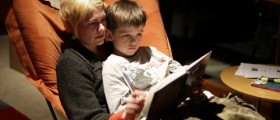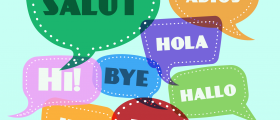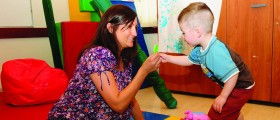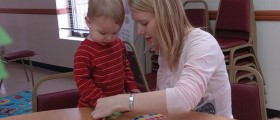
Dyslexia is a learning disorder which commonly manifests through various difficulties appearing during the language learning and language acquisition process, especially related to spelling, reading and writing. Dyslexia is not connected to lack of intelligence, even though it might affect coordination, concentration and short-term memory. Therefore, people with dyslexia are also found to be prone to ADHD and difficulties with coordinating and organizing thoughts.
Signs of Dyslexia
Dyslexia strikes each person on an individual level. Yet, it can range from mild to severe, commonly appearing in early childhood. Due to the fact that this condition appears so early, it can be noticed through certain signs it manifests through. Some signs may disappear later while others may stick with the child and remain present during the adulthood.
Basically, slow development of speech, commonly presented through appearance of speech after the year of 2, difficulties with pronunciation and clear speech and troubles detecting rhymes in words, all are possible signs of dyslexia. The child may also be incapable of putting numbers in the right order or memorizing the alphabet, being unable to differentiate between letters and other symbols.
Reading in the wrong order is also a possible sign of dyslexia, regardless if it involves skipping letters or reading words backwards and adding or removing words during reading. Additionally, dyslexic children may not be capable of recognizing the words they have seen before, even when it comes to spelling out one's own name or noticing it when written. Finally, the handwriting of dyslexics is known to be poor.
Thus, if you notice any of these signs appearing in your child, talk to his/her teacher, doctor or health practitioner.
Other Symptoms of Dyslexia that Help Diagnosing the Condition
If your child is dyslexic, he/she may often complain about blurry letters while reading, excessive glare from the computer monitor or inability to read black texts written on a white background.
Poor motor skills can accompany dyslexia too. Thus, be on a lookout for problems with tying shoelaces, drawing or cutting paper. Putting actions into plans and orders is also something that children with dyslexia are likely to be incapable of. Concentration, coordination and self-confidence issues can also appear in the daily routine of a child suffering from dyslexia.
However, dyslexia can also have positive side-effects such as increased creativity, excellent capabilities of thinking about things in a lager perspective, using intuition to solve problems and good visual, social and spatial skills.
Once you notice any of these symptoms, take your child to the doctor and tell him/her all about this phenomenon. Also, you are advised to contact the school too. The child will need to do diagnostic assessment tests as well as undergo interviews and observations. Once the type of dyslexia has been diagnosed, the health practitioners will help the child overcome his/her learning problems, learning how to live with this condition in the best possible manner.

















Your thoughts on this
Loading...